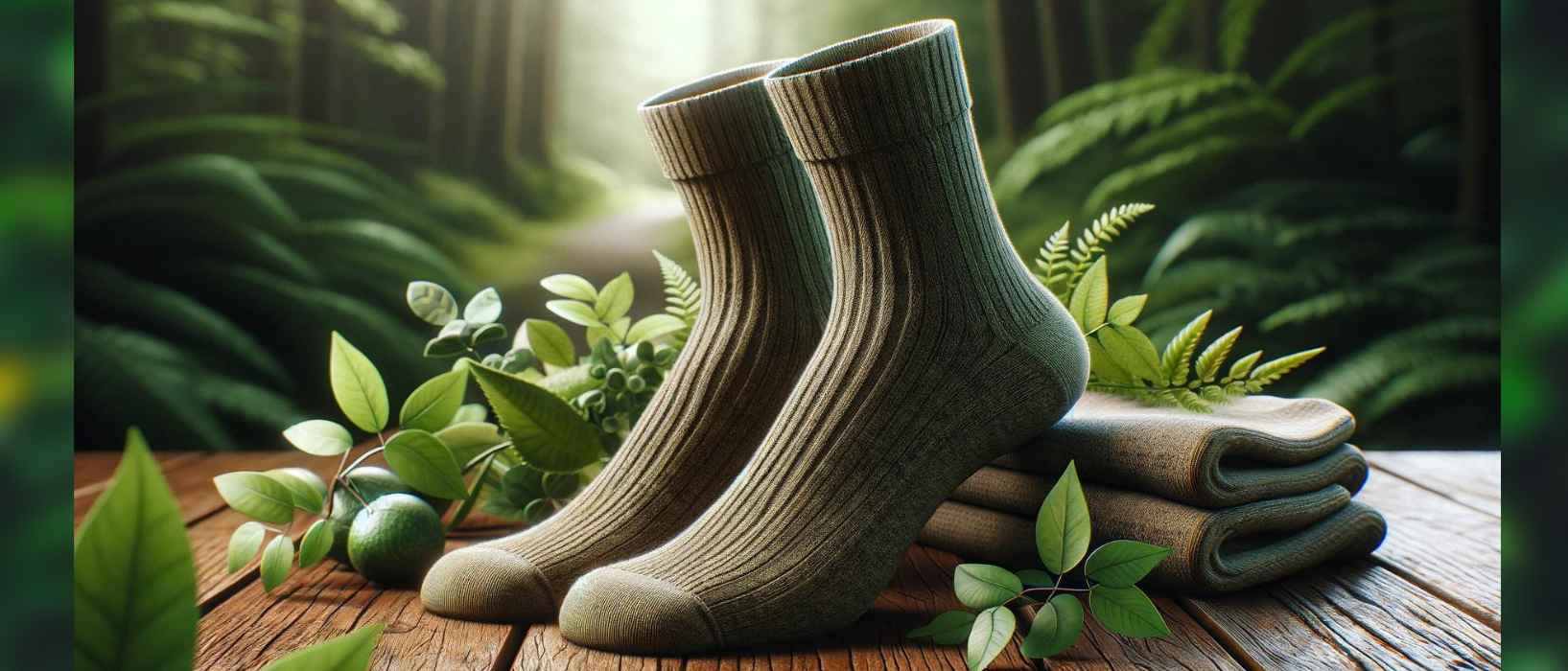
Sustainable Socks: Introduction
Welcome to your latest weekly sustainability tip where today, we’re unraveling the eco-friendly world of sustainable socks. Often overlooked, socks are an everyday essential, and their impact on the environment is significant. Traditional socks, usually made from synthetic materials, or cotton, contribute to global waste and pollution.
But there’s a green solution underfoot – sustainable socks. In this article, we’ll explore their benefits, the environmental impact of conventional sock production, and spotlight brands that are making a difference. Join us as we step into the world of sustainable socks, where comfort meets eco-consciousness.
Traditional Socks: A History
The earliest known knitted socks, discovered in Jutland (present-day Denmark), date to around 1500 BC. Additionally, early forms of stockings were found in Egyptian graves in Antinoe. By the 2nd century AD, the Romans innovated sock-making by sewing woven fabrics together. The Middle Ages saw the emergence of loom-knitted socks, a technique that spread throughout Europe, symbolising sophistication and status.
The Industrial Revolution in the 18th century marked a significant turn in sock production. The invention of the knitting machine allowed for mass production, making socks more accessible to the general public.
At the dawn of the 19th century, the introduction of the first circular knitting frames marked a significant shift in sock production, moving towards a largely mechanised process. This technological advancement led to widespread job losses among home workers and traditional sock makers as factories began to dominate production.
Next we saw the introduction of nylon in the 20th century, revolutionising the sock industry with its durability and elasticity.

This historical journey of socks not only reflects technological advancements but also underscores the need to revisit our material choices. This is paving the way for the recent rise in sustainable sock options that focus on eco-friendly materials and production methods.
Traditional Socks: Environmental Impact
The production of traditional socks, primarily made from synthetic materials like nylon and polyester, is a significant environmental concern. The process begins with the extraction of petroleum, a finite resource, which is then transformed into fibres through energy-intensive methods. This manufacturing stage releases substantial greenhouse gases, contributing to global warming.
Moreover, the creation of synthetic socks involves large quantities of water and often uses harmful chemicals for dyeing, leading to further water pollution and depletion of this precious resource.
As we wear and wash these socks, they shed tiny plastic fibers, adding to the ever-growing problem of microplastic pollution. These microplastics are particularly insidious, as they can easily enter our water systems, affecting marine life and potentially making their way into our food chain.
The issue extends to the disposal of these socks; being non-biodegradable, they accumulate in landfills, taking hundreds of years to break down while releasing toxic substances into the soil and groundwater.

Transportation also plays a role in their environmental impact. The journey from production facilities to retail outlets and finally to consumers adds to the carbon footprint of each pair of socks. This entire lifecycle—from raw material extraction to disposal—highlights the significant and multi-faceted environmental impact of traditional sock production, emphasising the need for more sustainable practices in the textile industry.
Sustainable Socks: What to Look For
When seeking sustainable socks, several key factors should guide your decision-making process. Firstly, prioritise materials that are environmentally friendly and ethically sourced. Look for socks made from organic cotton, which reduces the use of pesticides and water compared to conventional cotton farming. Alternatively, consider socks crafted from renewable materials like bamboo or hemp, which require fewer resources and have a lower environmental impact.
Additionally, opt for socks that are certified by recognised standards such as Global Organic Textile Standard (GOTS) or OEKO-TEX Standard 100, ensuring they meet stringent criteria for sustainability and safety.
Next, examine the production process. Choose socks manufactured by companies committed to sustainable practices, including fair labour conditions, energy efficiency, and waste reduction. Transparency regarding supply chain practices is essential, allowing you to verify ethical sourcing and production methods.
Furthermore, consider the durability and longevity of the socks. Investing in high-quality, well-constructed socks may initially cost more but ultimately reduces waste by lasting longer and requiring fewer replacements.
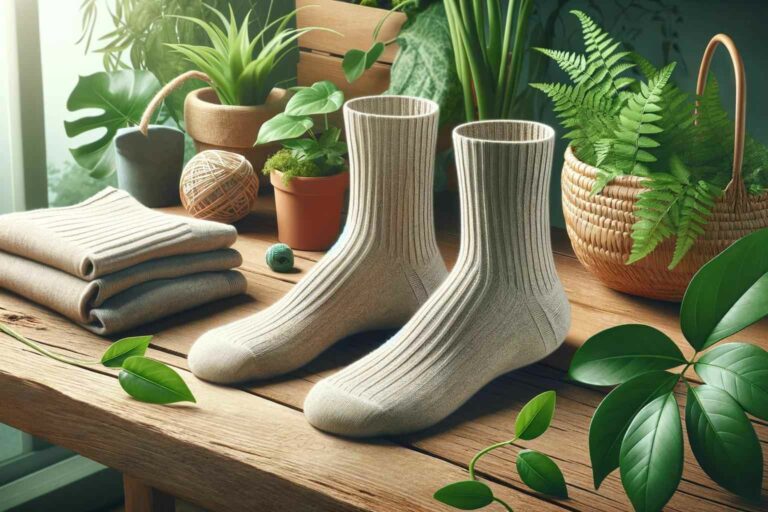
Finally, look for brands that offer recycling or take-back programs for old socks, promoting circularity and minimising landfill waste. By prioritising these aspects, you can make informed choices that align with your values and contribute to a more sustainable future.
Sustainable Socks: Three of Our Favourite Brands
Swole Panda
Your first brand, Swole Panda, a UK-based brand, specialises in bamboo fabric socks, offering a variety of designs. They focus on sustainable and ethical fabrics like organic bamboo and recycled materials. Their sustainable approach extends to their headquarters, situated in an eco-friendly building. Their products, known for comfort and style, trace their bamboo origin to China, emphasising transparency in their supply chain. You can head to their website here Swole Panda Socks and use code TAKE10 for a 10% discount.
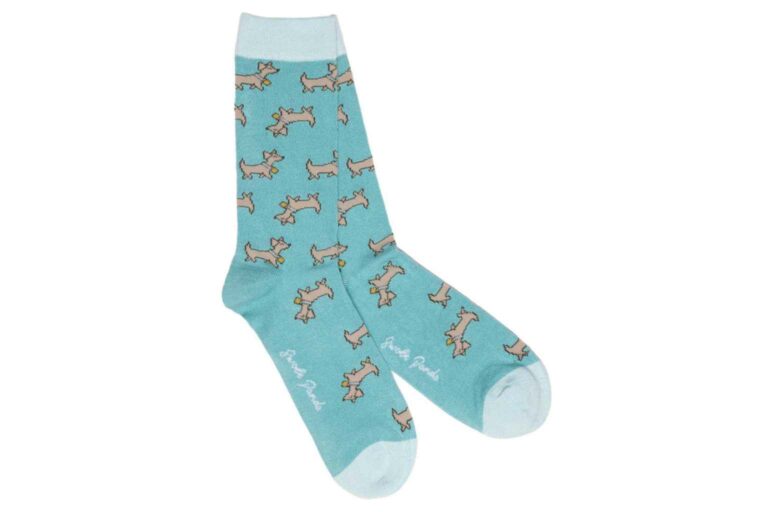
Bare Kind
Your next brand, Bare Kind socks, featuring charming animal designs, are made using sustainable bamboo fibres. Each sale supports various wildlife and conservation organisations, with 10% of profits donated. They are B Corp certified, reflecting their commitment to social and environmental performance. Bare Kind’s approach combines fun designs with a serious commitment to sustainability and animal welfare. Head to Bare Kind Socks website to see their fantastic collection and use code HELLO for a 10% discount.
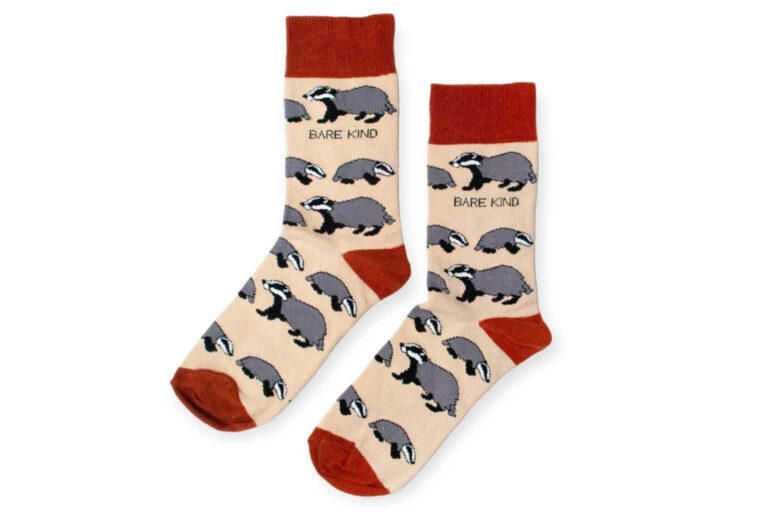
Leiho
You final brand, Leiho offers bamboo socks with unique, fun designs. Each purchase supports homeless charities, with a percentage of profits going towards essential items for those in need. Their vegan-friendly socks are designed for comfort and style, catering to all age groups. Leiho’s mission extends beyond commerce, seeking to make a positive impact on society with every pair sold. Head to the Leiho Socks website and use code LEIHO10 for a 10% discount!
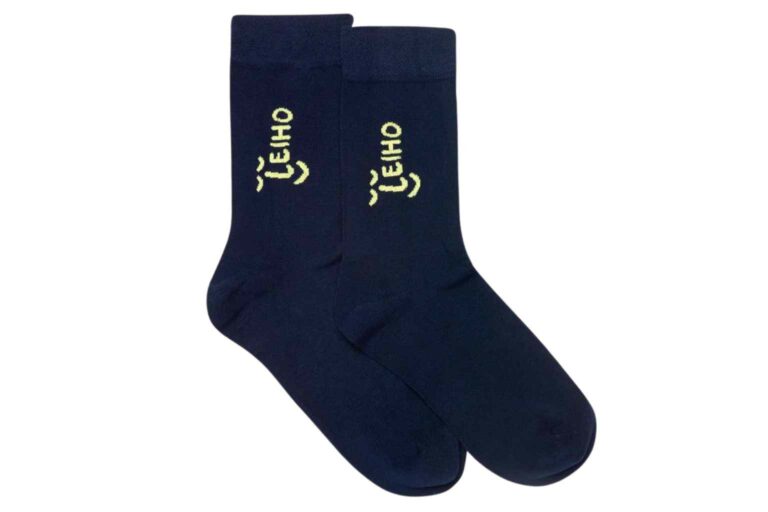
Sustainable Socks: Wrap Up
The switch to sustainable socks is more than just a fashion statement; it’s a step towards a more eco-friendly lifestyle. Every pair of sustainable socks we choose is a vote for a cleaner environment and a more ethical fashion industry. By opting for brands that prioritise sustainability, we can make a significant impact, even in something as small as our choice of socks.
Let’s embrace this simple change and continue to seek out ways to reduce our environmental footprint. Remember, in the journey of sustainability, every step counts, and it can start right at our feet with sustainable socks.
Play It Green: Empowering Your Sustainability Journey
Ready to take your commitment to sustainability to the next level? Play It Green stands as your partner in creating positive environmental change. From educational resources on sustainable practices and signposting to sustainable services to initiatives like tree planting and social giving, Play It Green offers a holistic approach to environmental stewardship.
Join us in the journey toward sustainability—embrace eco-conscious practices and be a force for positive change in our world. All whilst staying relevant, meeting legislation and aligning with the values of today’s consumers and employees.







